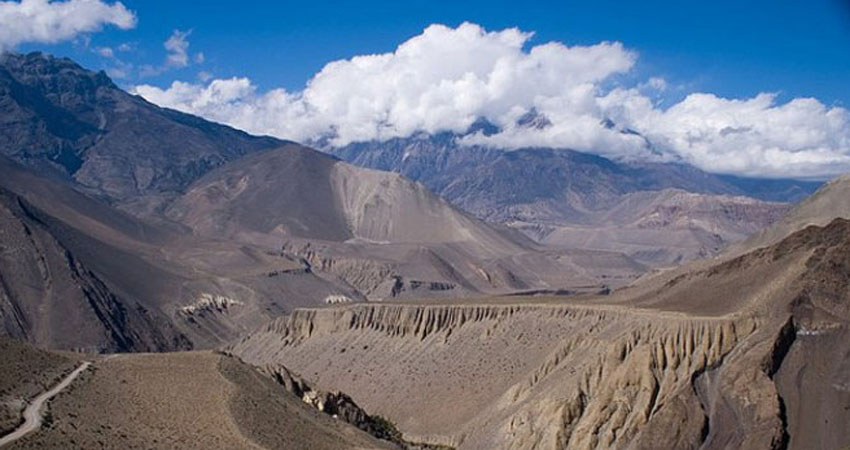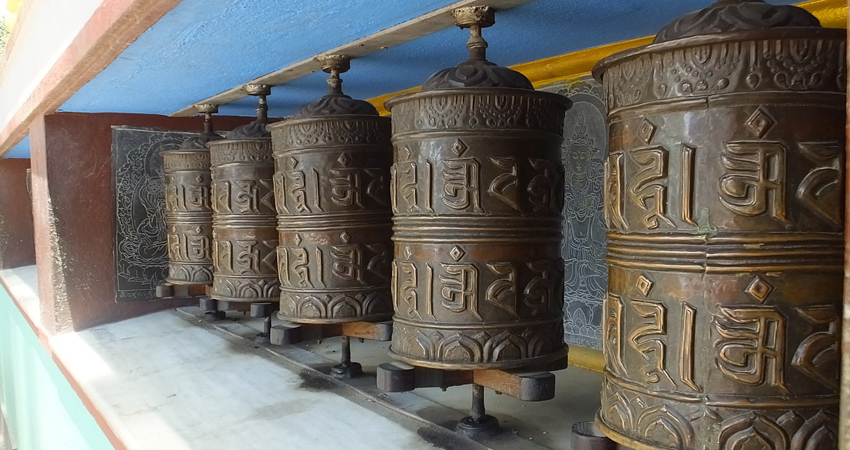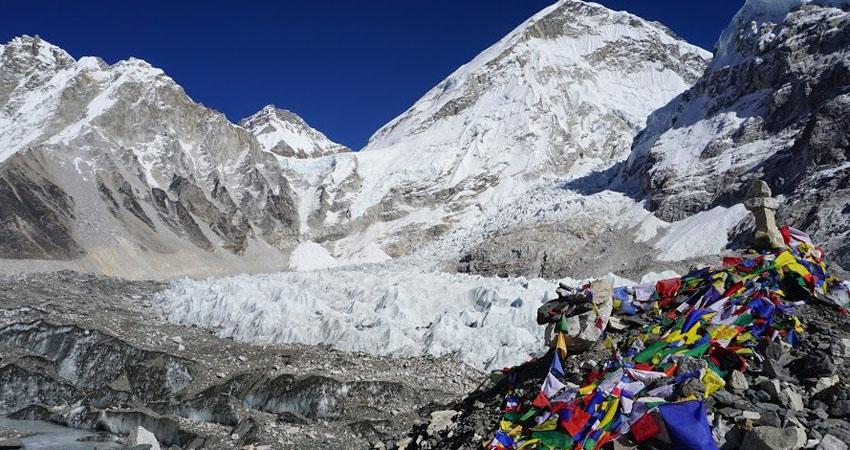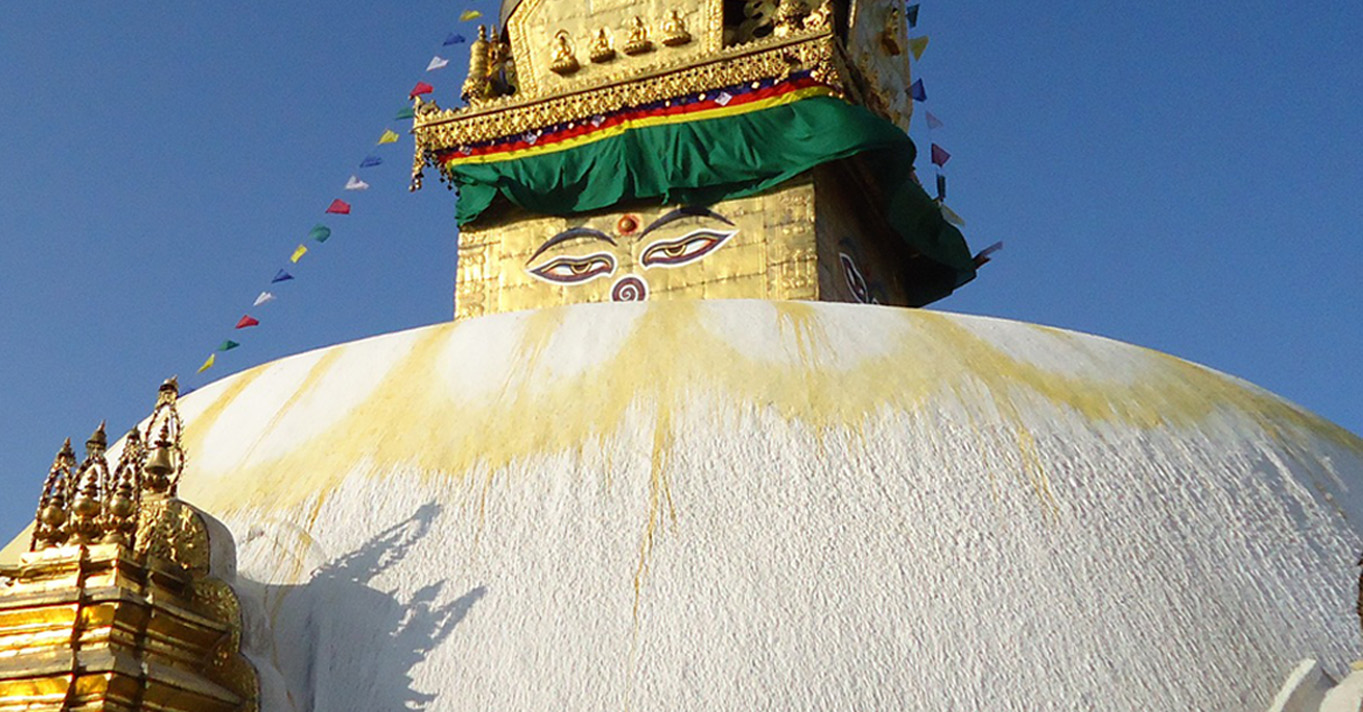Tiji Festival Trek
- Max Altitute: 4320 m
- Trip Duration: 18 Days
- Activity Level:
- Group Size: 2-10 Pax
- Trip Budget:
Trip Overview
Witness the impressive ancient colorful festival around high and picturesque Manang valley with Tiji Festival Trek. Tiji Festival of Upper Mustang the one and only of its kind in whole Himalaya which is held annually at the end of April or in the month of May, as per the Tibetan Buddhist Lunar Calendar which is one of the most auspicious event of Upper Mustang, where all wide-world interested travelers can join in to witness this amazing and unique colorful Tiji Festival. The great event Tiji festival celebrated only at Upper Mustang with great pomp and joyful harmony, the main religious ceremony of Lo or Upper Mustang, where the festival takes place within the great wall city (at present a large village) of Lo Manthang the capital and main place of Upper Mustang close to the border of Tibet a mere distance to Karo-la pass which leads to Tibet on an ancient Trans-Himalaya Salt Trade Route of Nepal-India and Tibet.
History is once repeated after hundreds of centuries with Tiji Festival where you can observe priests and monks chase the Demons from Lo Manthang. Holding human skull-tops laced with streamers, lamas chants religious mantra or prayers and perform the glorious masked performance nearly fifty kinds of religious dances. Interrupted by colorful masked demons who wave wooden swords at anxious viewers and to His Eminence Late Chogye Trichen Rinpoche who lived from 1919 to 2007, Which was the head of Tsharpa branch of Sakyapa tradition of Tibetan Buddhism sects, who graced many Tiji celebrations with his holy presence, and has played a major role in keeping alive the Sakyapa religious sects of Buddhism tradition in and around high country of Upper Mustang at Lo Manthang. Upper Mustang was once a forbidden former old kingdom of Lo, actually the main place of the Mustang district is Jomsom, but the real and old Tibetan style district located north of Kagbeni which is known as Upper Mustang. Mustang has an average elevation of 13,000ft and is located to the north of the mountain giants of Dhaulagiri and Annapurna and is therefore north of the main Himalayan range and geographically is part and extension Tibet high plateau a vast high country of windswept, arid and barren landscapes, characterized by eroded beautiful red colored canyons, with vast colorful stratified rock formations and desert-like in appearance. Fascinating features of Upper Mustang with its hundreds of cliff dwellings, some looks completely inaccessible. The most recent theory is that they may date 8-10,000 BC when Mustang was a much greener land.
Naturally, most of the history is now a legend rather than recorded fact, but it seems clear that Lo was once part of Ngari, part of Tibet and a rather loose collection of feudal domains. it was incorporated into the Tibetan Empire under the most famous of the Tibetan kings Songtsen Gampo. An important route crossing the great Himalaya from Tibet to Nepal, and many of the old salt caravans passed through Mustang. By 14C much of Ngari became part of the Malla Empire, whose capital was Sinja in western Nepal. Really, it became an independent kingdom in its own right, under the rule of Ame Pal, the founder king of Lo in 1380. The present royal family can trace its history 25 generations back to Ame Pal, and the city of Lomanthang, which we will visit, was the center of their power. Famous and well known, daring explorers such as Professor David Snellgrove and the Italian scholar Giuseppe Tucci visited Mustang in the 1950’s and has described the tales of Mustang as Tibetan like arid region that has fuelled the interest of many travelers to visit this area for once in a lifetime experience and as well to take part in the great event Tiji Festival with Tiji Festival Trek.
Detailed Itinenary
- Day 1 Arrival at Kathmandu Airport.
As soon as we come out of Tribhuwan International Airport, which is in Kathmandu, we will see the representative of Remarkable Adventure Trek, holding its signboard, and then we are taken to a hotel in a private vehicle. The representative will provide information on dos and don’ts and other related information, as well as on trekking and sightseeing. This will be done if we arrive in the late evening or at night. But if we arrive in the morning or afternoon, we will be taken to the office of Remarkable Adventure Trek, where there will be a meeting, in which we have to show our passports, three copies of our passport-sized photos, and a readable copy of our travel insurance policies. It is in this meeting that we will be introduced to our trekking guide.
- Day 2 Sightseeing tour of Kathmandu valley.
After breakfast, we will do the sightseeing of the following historical places of Kathmandu by driving in a private vehicle and accompanied by the city guide of Remarkable Adventure Trek. If we had arrived at night on Day 01, then we will have a meeting today in the afternoon after the sightseeing. Kathmandu Durbar Square is a UNESCO World Heritage Site of Nepal. Most of the buildings that we see here date from 15th to 18th century. The major Interesting things to see here are “Kumari (The Living Goddess) Gar” “Kastha Mandap “Maru” Ganesh, Mahadev Temple, Shiva-Parvati Temple, Bhagwati Temple, Old Palace, Saraswati Temple, Krishna Octangular Temple, Big Drums, Kal Bhairav, Jagannath Temple, and Taleju Temple. Pashupatinath is one of the main temples of the Hindus, which is a world heritage site, and which lies on the bank of the Bagmati River. Only the Hindus are allowed to go inside this temple, and they can also be seen on the bank of the Bagmati River, worshipping and praying in small temples of the Hindu gods and goddesses. Bhaktapur Durbar Square is a palace, a famous palace of Nepal and comprises Royal Residential Quarter of Bhupatindra Malla and temples with beautiful architectural designs. Boudhanath is one of the holiest Buddhist sites in Nepal and has four pairs of eyes, representing those of Lord Buddha. We will find the people from all religions going around the stupa and spinning the prayer wheels.
- Day 3 Flight or Drive to Pokhara, 25 minutes flight or 6-7 hour drive.
This morning you will drive to Pokhara (200km) the road mostly follows the River Trisuli and Marshyangdi, depart 7:00 AM in the morning, the approximately 6-hrs way by tourist bus and 5-hrs drive by private transport. Along the drive, you will enjoy the beautiful scenery. You will arrive late afternoon at Pokhara with enough time to enjoy the colorful town of Pokhara.
- Day 4 Pokhara fly to Jomsom and trek to Kagbeni (2,858m) 3-4 hours.
After breakfast, we head off to the airport for Jomsom flight. The flight is scenic because of the beautiful mountains, such as Annapurna and Dhaulagiri. Jomsom is a large town and windy place. We walk along the Kali Gandaki River for 3 hrs and reach Ekley-bhatti village, and from there, we head off to Kagbeni, which is located on the bank of two rivers.
- Day 5 Kagbeni trekking to Chele (3050m) 5-6 hours.
Kagbenit to Chele is around 7 hrs by walk so we start our trek to Chele after our breakfast in Kagbeni where we will have our lunch on the way. Today we should start our treks early in the morning because after 11 AM there used to blow the sandy wind in this very place so to avoid it early treks in recommended. Overnight in Chele.
- Day 6 Chele trekking Ghiling (3806m) 6-7 hours.
Next day journey starts with a special permit check up onwards to the riverbank of Kali Gandaki upstream. We enter upper Mustang and follow the east bank of the river over a series of small ridges. The trail leads us through the scenic picturesque villages surrounded by fields of wheat, barley, and buckwheat, interspersed with small apple orchards.
- Day 7 Ghiling trekking to Charang (3575m) 4-5 hours.
The climb continues along the steep, treeless and dry terrain, along the side of a spectacular deep canyon to pass a cairn of rock. Climb above Samar and descend into a large gorge and go into another valley along the surrounding of cool streams and junipers trees, crossing a stream and climbs up to a ridge at 3800m.
- Day 8 Charang trekking to Lo- Manthang (3700m) 5-6 hours.
We walk in the great valley to Tholung Lo La pass (3945m) on which floats tens of prayer flagsand where the view is great on the “capital” of the Mustang and its surroundings. Lo-Manthang short descent (3820m) and then we spend the afternoon to discover this walled city through its maze of alleys. We visit the main sites and monuments of Lo-Manthang: theJhampa Lhakang which houses a huge Buddha statue and huge mandalas, the monasteries of Thubchen Chodey and then, if the “Raja” is in residence, we may be visit thegrand Palace.
- Day 9 The Tiji Festival begins 1 day of Tiji.
Tiji festival is a three days ritual known as “The chasing of the Demons” and it is centered around the Tiji myth. Today is day first. Tiji tells the story of a deity named Dorje Jono who must battle against his demon father to save the Kingdom of Mustang from destruction.
- Day 10 Second Day of Tiji Festival.
On the second day of Tiji, numbers of Loba have arrived from the outlying hamlets, and the small square is thronged with wild beautiful people, with all of the women and children, at least, in traditional dress. The King of Mustang “wears a whole crown of tiny river pearls set off by dozens of large red coralline tones interspersed with matched ornaments of turquoise.The costumes and masks, the twelve-foot horns, the gold cups of wheat, the butter cakes, the snow peaks and wind and dust and sun, the mehti, snow leopard, snow pigeons, saligrams, the dying glacier and the desert ruins, the drunks and rajas and foreigners, the dogs and yaks.
- Day 11 Third day of Tiji and end of Festival.
Tiji Festival Ends (3rd day) (Overnight at Tea House) .
- Day 12 Lo-Manthang trekking to Ghami via Lo-Geker (3520m) 6 hours.
While returning from Lo-Mangthan, we take a same route till Ghami.
- Day 13 Ghami trekking to Samar (3520m) 5 hours.
Today, we get back to Samar as our journey for our overnight stay after a long walk takes 6-7 hrs. After arrival and lunch enjoy the day exploring the area, but it will be dusty wind in the afternoon, better to walk in the evening time.
- Day 14 Samar to Kagbeni (2,858m) 6 hours.
We walk along the bank of Kali Gandaki River with the views of natural vegetation and apple orchards to Kagbeni. Spend the night enjoying the ancient and uniqueness of the Kagbeni village.
- Day 15 Kagbeni to Jomsom (2700): Walking Distance 3 hours.
Today is the last day of our trek, so it is better to start early. Finishing the upper Mustang trekking trail, we join the normal Annapurna Circuit Trek. After having lunch at Kagbeni, we will head to Jomsom.
- Day 16 Fly back to Pokhara, 20 minutes flight.
From Jomsom, we fly to Pokhara and see some of the famous mountains of the world. (Breakfast is included)From Jomsom, we fly to Pokhara and see some of the famous mountains of the world.
- Day 17 Pokhara to Kathmandu, 25 minutes flight or 6-7 hour drive.
From Pokhara, we drive to Kathmandu. In the evening, we will be invited for a farewell dinner with cultural show.
- Day 18 Final Departure.
From the hotel, before 3 hours, we are picked up for your international flights and transferred to Tribhuwan International Air.
Cost Information
1. What's Includes- Airport / Hotel / Airport pick up & drop by private tourist vehicle.
- Standard twin sharing accommodation in a three-star hotel in Kathmandu; Breakfast included.
- Guided city tour in Kathmandu by private tourist vehicle.
- All your standard Meals (Breakfasts, Lunches, and Dinners) during the trek.
- Lodges, Guesthouses accommodation during the trek.
- Remarkable Adventure Treks’ local licensed holder English speaking guide.
- The required number of local staff and porters to carry your luggage during the trek.
- Food, accommodation, salary, insurance, equipment and medicine for all staffs.
- Upper Mustang Entry permit and TIMS permit for trekking.
- Down Jacket and sleeping bag by Remarkable Adventure Trek (which need to be returned after the trek).
- Surface transfer from and to Kathmandu.
- Free Remarkable Adventure Trek duffel/kit bag (yours to keep).
- Sightseeing/Monument entrance fees in Kathmandu on the second day.
- Farewell dinner in typical Nepali Restaurant with cultural show.
- All our government taxes, vat, tourist service charges and official expenses.
- Lunch and dinner whilst in Kathmandu.
- Travel insurance which covers emergency Rescue and Evacuation.
- International airfare and airport departure tax.
- Nepal entry visa; you can obtain a visa easily upon your arrival at Tribhuwan International Airport in Kathmandu. (Tourist Visa with Multiple Entries for 30 days can be obtained by paying the US $ 40 or equivalent foreign currency. Similarly, Tourist Visa with Multiple Entries for 90 days can be obtained by paying the US $ 100. Please bring 2 copies of passport size photos).
- Alcoholic, hot and cold drinks.
- Items of a personal nature (personal trekking gear, beverages, the internet, laundry, bottled water, etc).
- Tips for trekking staffs.
- Extra night accommodation (early arrival, late departures due to weathers, and any others reasons).
- Any others expenses which are not mentioned on Price Includes section.
Date & Availability
Frequenty Asked Question's
Trip Equipment & Packaging List
For your trip preparations Remarkable Adventure Trek provides you with related information and advice required for your adventure holiday trip in and around Nepal Himalaya and beyond, providing you with following equipment list for the trekking. If it’s too much to carry from your home country some of the necessary equipment can be hired or bought in Kathmandu around at Thamel or in Pokhara as well. Most of the equipment is general and standard lists for all seasons while on the trek but may differ as per the season and duration of trekking and areas of your chosen trip.
For Head:
- Sun hat or scarf.
- Light balaclava or warm fleece headgear.
- Sun Glasses and snow goggles with UV protection.
For Lower Body:
- Under Garments.
- Hiking shorts.
- Lightweight cotton long pants.
- Light and expedition weight thermal bottoms.
- Fleece or wool pants (seasonal).
- Waterproof (preferably breathable fabric) shell pants.
For Feets:
- Thin, lightweight inner socks.
- Thick, warm wool hiking socks.
- Hiking boots with spare laces.
- Camp shoes (sneakers and/or sandals).
- Gaiters for hiking in winter to the base camp.
For Upper Body:
- T-shirts.
- Light and expedition weight thermal tops.
- Fleece jacket or pullover.
- Fleece Wind-Stopper jacket (optional).
- Waterproof (preferably breathable fabric) shell jacket.
- Down vest and/or jacket.
For Hands:
- Lightweight gloves.
- Heavyweight gloves or mittens with a waterproof shell outer (seasonal).
Other Accessories:
- Sleeping bag rated to zero DC (4 seasons down sleeping bags).
- Headlamp (e.g. Petzl Zoom) with spare bulbs and batteries.
- Trekking Bags/Duffel bag.
- Basic First Aid Kit.
- Large plastic bags – for keeping items dry inside your kit/duffel bag.
- Daypack (approximately 2500 to 3000 cubic inches / 10-15 liters / kgs capacity).
- Trekking Poles (optional).
- Water bottle (2) or cameo bag.
- Toiletries (Small wash towel, Toilet papers etc).
- Ear Plug (who know some people on a group are snoring) as optional.
Toiletries:
- 1 medium sized quick-drying towel.
- Toothbrush/paste (preferably biodegradable).
- Multipurpose soaps (preferably biodegradable).
- Deodorants.
- Nail clippers.
- Face and body moisturizer.
- Feminine hygiene products.
- Small mirror.
On Personal Hygiene:
- Wet wipes (baby wipes).
- Tissue /toilet roll.
- Anti-bacterial hands wash.
Extra Luxuries as optional:
- Binoculars.
- Reading book.
- Trail Map/Guidebook.
- Journal & Pen.
- Walkman.
- Pen and small notebooks.
- Travel game i.e. chess, backgammon, and scrabble.
Ams Info
Remarkable Adventure Trek operates and runs all high altitude treks and climbs with the support of our expert and veteran guides who has been in these profession for more than two decades, all our guide have undergone with much training and attending workshop on related fields every year like Medical Course with enough knowledge of AMS (Acute Mountain Sickness) and proper use of Gamma Bag or Portable Altitude Chamber (PAC) pressure bags when required on emergency purpose on high AMS symptoms and to work on minor medical problem treatments.
Causes of Altitude Mountain Sickness:
- Altitude mountain sickness is caused by reduced of air pressure with lower oxygen levels at high altitude.
- The faster you climb to a high elevation, more likely you will get altitude or acute mountain sickness (AMS).
Symptoms:
- Difficulty in sleeps.
- Dizziness or light-headed.
- Fatigue.
- Headache.
- Loss of appetite.
- Nausea or vomiting.
- Rapid pulse (heart rate).
- Shortness of breath with exertion.
Treatment:
- Altitude mountain sickness is easier to treat in the early stage.
- The main treatment for all forms of mountain sickness is to go down (descend) towards lower altitude as fast you can with support of our guide and staff.
- Extra oxygen should be given, if available.
- People with severe altitude mountain sickness should be admitted to a hospital or evacuated by any means of transportation the fastest is by Helicopter.
- Remarkable Adventure Trek suggests you Polyacrylamide (Diamox) because this medicine helps you to feel better if you are trekking in high altitude areas.
- It also helps you to reduce mild symptoms. This medicine works best when you take it before you start gaining much higher altitude. Beside our advice please consol with your doctor.
While climbing higher elevation:
- Drink plenty of fluids (water-plain black tea-lemon-tea or nutritional value drinks).
- Avoid alcohol
- Eat a lot of garlic’s (this is local way fighting altitude).
- You should avoid high altitudes if you have heart or lung disease.
Note: In case of emergency, you will be immediately airlifted by Helicopter to Kathmandu.
Trip Note
Nobody knows or cares about the safety of your group better than our trekking guides because they know how to cope with the unexpected situations that occasionally arise in the high altitudes of the Himalaya. In these situations, it is vital that trekkers are flexible and listen to the guides’ directions. The trip that you are on may be affected by weather, politics, or even wildlife. Whatever the factor may be, it is possible you may have some changes in your itinerary, as the seasoned guides of Remarkable Adventure Trek decide the safest option for you. If changes must be made to your trip, our guides will work hard to stick to your original itinerary as much as possible until the change becomes unavoidable. However, Remarkable Adventure Trek will not be responsible for an outcome, resulting from bad weather, wildlife, or political situation before, during, or post trip.
WHAT MAKES THIS TRIP DIFFERENT FROM OTHERS?
Trek Remarkable Adventure Trek works for social causes with some non-profit organizations of Nepal, concerned with environment conservation and preservation includes street children who need better education and good normal life. We help and support for the cause with some of our profits to certain organizations so that we can make street children with sound and better life when they grow up. We believe that education and healthy children make more stable and better future of Nepal.
For donation, Sponsorship, and Volunteering, please contact to info@remarkableadventuretrek.com
Trip Highlights
- Trekking on an old Salt Trade & Caravan Route of Nepal-India and Tibet.
- Views of high snow clad mountains on daily walks with dramatic landscapes scenery.
- Visiting Thakali and Mustang people villages of immense Buddhist culture and custom.
- Picturesque country a photographic paradise within wild Mustang landscapes.
- Walk in between Annapurna and Dhaulagiri Himalayan range with incredible views.
- An extension of windswept high and dry Tibetan plateau with views of snow capped peaks.
Quick Inquiry
What To Expect
- Accommodation Type
- Travel Strategy




